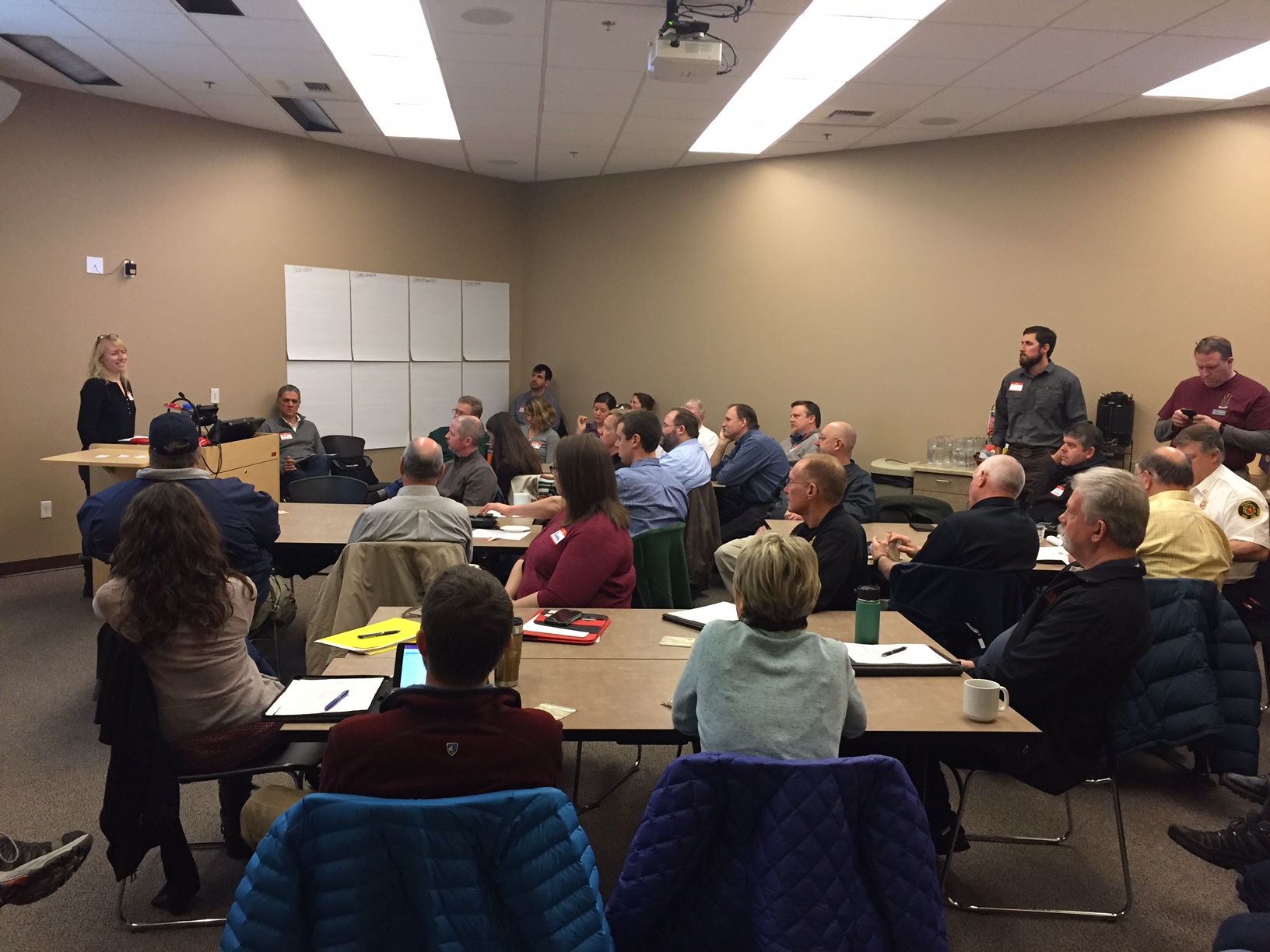
Chelan County, Washington
Chelan County is one of Washington’s fastest growing counties on the east side of the Cascade Mountain Range. Many new residents are second homeowners coming from less fire-prone areas of the state, eager to enjoy the mild climate and beautiful Lake Chelan. Most new development is in dry ponderosa pine and shrub-steppe environments that evolved to burn frequently.
In recent years, Chelan County has experienced some of the most destructive wildfires in state history. In 2014, the Chiwaukum Fire burned almost 15,000 acres and threatened hundreds of residences. The 2015 season began earlier than usual with the Sleepy Hollow Fire, which burned 3,000 acres, destroyed 30 residences, and affected the city of Wenatchee. A few weeks later, on the south end of Lake Chelan near the City of Chelan, several fires became the Chelan Complex Fires and burned more than 95,000 acres, destroying more than 50 homes.
In the fall of 2016, Chelan County was selected for full assistance in the CPAW program, building off Wenatchee and the City of Chelan’s participation in CPAW the year prior. The CPAW team provided recommendations to the County and a new wildfire hazard assessment, developed by the U.S. Forest Service Rocky Mountain Research Station. Among the CPAW recommendations for Chelan County are to define the wildland-urban interface (WUI) and implement a WUI risk assessment program; to adopt a WUI code; and to update the comprehensive plan to support wildfire activities.
Researchers with the U.S. Forest Service also developed this Story Map to describe some of the ways in which risk can be assessed.
In 2019, Chelan County updated its Community Wildfire Protection Plan (CWPP) using the definition of the WUI recommended by the CPAW team. Additionally, the hazard assessment created in partnership with the Rocky Mountain Research Station is included in the CWPP and remains the definitive spatial reference for the WUI in Chelan County. The county has also hired a fire marshal to inspect and enforce fire protection standards, as well as collaborate with the Building and Fire departments on new proposed development sites.
Snapshot
- 2017 CPAW Community
- Population (2014): 74,267
- Growth Rate (2000-2015): 18.3%
- Fuel Type: ponderosa pine; dry Douglas-fir; dry grassland/ shrubland
Resources
- CPAW Recommendations for Chelan County
- An Assessment of Community Wildfire Risk in Chelan County (Story Map)
- Chumstick Wildfire Stewardship Coalition
- Christian Science Monitor feature article about Chelan (August 2018)
